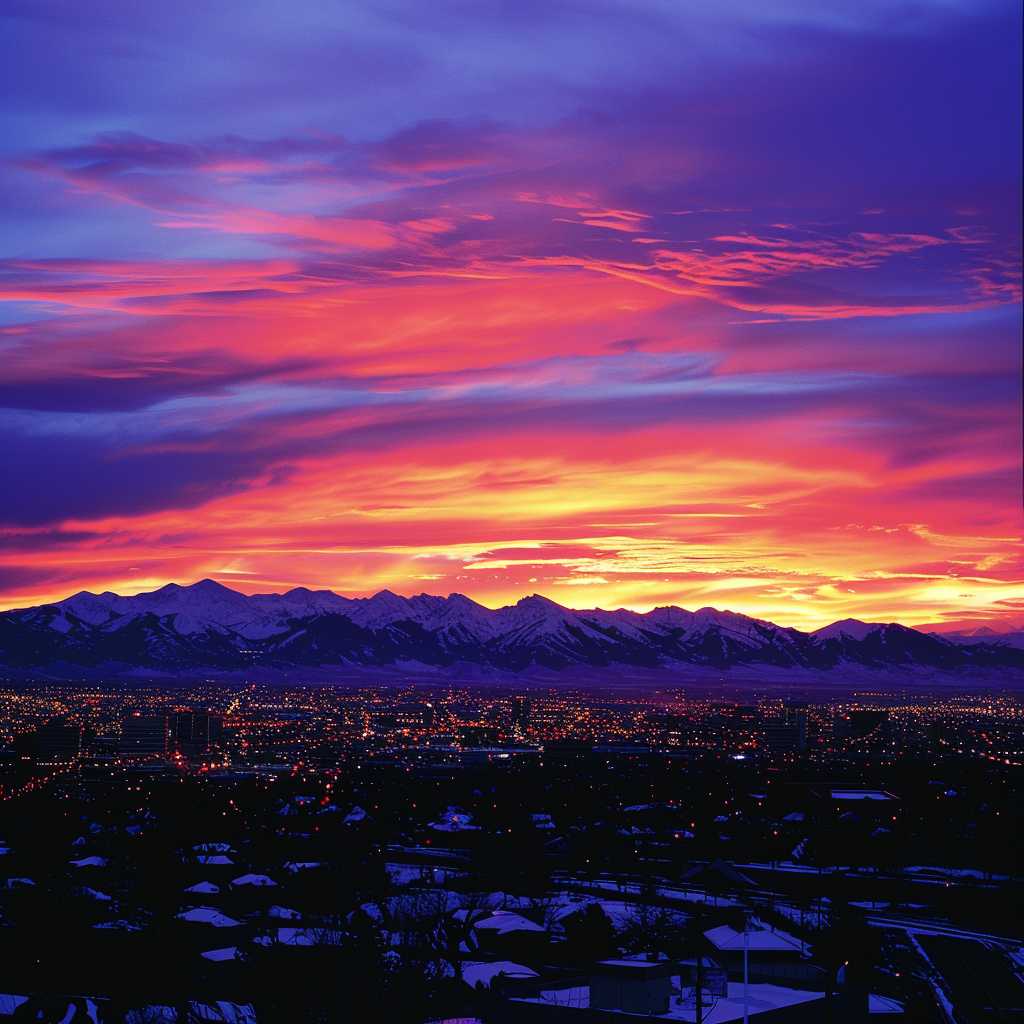Understanding Denver’s Weather: Analysis of the Mile-High City Climate
Denver, the capital of Colorado, is known as the Mile-High City. Located at an elevation of 5,280 feet, Denver experiences a semi-arid, continental climate that boasts more sunshine than San Diego or Miami Beach and weather that can oscillate between unpredictable snowstorms and balmy, sunny days. The city’s unique weather patterns result from a combination of factors, including its altitude, geographic location between the Great Plains and the Rocky Mountains, and its position on the 105th meridian west.
Denver’s Climate Overview
Denver benefits from a high altitude that significantly shapes its climate. With four distinct seasons, residents experience a wide range of weather conditions. Winters can be cold with moderate to heavy snowfall at times, while summers are typically hot with relatively low humidity. The importance of understanding Denver’s weather lies in its variability, which impacts city life, transportation, agriculture, tourism, and other vital aspects.
Winter in Denver: Between Mild and Snowy
Winter in Denver is a picturesque season that can alternate between surprisingly mild temperatures and dramatic snowfall. Contrary to what might be expected of a city located at such a high elevation, daytime winter temperatures often hover around a comfortable range when not experiencing cold snaps.
The Impact of Highland Air on Winter Weather
In the heart of winter, high-pressure systems frequently push air downwards warming it up as it descends. This often creates pleasantly mild conditions on the city’s sunny days despite the season. However, given Denver’s location east of the Front Range of the Rocky Mountains, the area is affected by sudden periods of cold due to northerly outbreaks and the notorious Colorado Low—a cyclonic activity that can lead to rapid temperature drops and intense snowfall.
The Fascinating Phenomenon of Chinook Winds
Adding another layer to Denver’s winter weather idiosyncrasies is the Chinook or ‘snow-eater’ winds, which are especially common in December and January. These warm, dry winds come from the Pacific Ocean and can result in rapid warming throughout winter months, causing significant temperature increases within hours.
Spring in Denver: A Transition Period with Capricious Weather Patterns
Spring is characterized by highs and lows swinging across temperature gradients in Denver. As snow begins to melt in March and April, residents often experience a hodgepodge of sudden snow storms that swiftly interchange with warm days leading into summer.
Snowfall Response and City Activities
Due to its unpredictable spring snowfalls, Denver has efficient systems in place for responding to heavy snowstorms. This ensures continued functionality within urban settings and across transit infrastructure during sudden weather changes.
Summer Weather: Heatwaves & Thunderstorms Abound in Denver
During summer months in Denver, temperatures can soar well into the 90s (Fahrenheit). However, due to low humidity typical of its semi-arid climate zone coupled with notable altitude, even hot days can feel much bearable than in other regions with higher atmospheric moisture content. Moreover, nearly every evening cools down significantly providing reprieve from daytime heat.
Coping with Heat and Sunshine in Urban Spaces
Green urban planning plays an essential part in making Denver summers enjoyable and sustainable. Parks offer shade and cooling effects, increasing comfort levels within dense city fabrics.
Interplay of Elevation and Solar Intensity
Sunshine is more intense in Denver owing to its elevation. High-altitude ultraviolet light is stronger; thus, sunscreen is considered necessary year-round.
Afternoon Thunderstorms: A Summer Norm
One distinguishing characteristic of summer is the frequency of thunderstorms typically occurring in the afternoon. Convective thunderstorm systems are prompted by intense solar heating along with Denver’s topographic features encouraging uplifting air currents necessary for storm formation.
Autumn Weather: Tranquility Before Winter
Autumn in Denver is often heralded as its most pleasant edge season—experiencing less variation in weather patterns compared to spring. Daytime temperatures regularly achieve comfortable warmth while evenings start hinting at upcoming winter chill.
Preparing for Winter Weather Transitions
Denoting a change in seasons around September marks an integrated approach by communities preparing for diverse metrological conditions ahead. Optimization of agricultural harvest timelines also harken guided by autumnal forecasts.
Annual Precipitation Averages and Drought Concerns
Precipitation collected throughout all seasons contributes to an average between 14-15 inches per annum. Despite having numerous days filled with sunshine well beyond national average countings; drought remains concerning due to semi-arid regional characteristics combined with fluctuations in annual rainfall.
Notes
*Image description: A rich orange and purple sunset bathes snow-capped Rocky Mountains overlooking Denver’s bright cityscape below; thin wisps of clouds reflect sunlight highlighting the unique climatic meshwork characterizing this elevated urban corner.*
